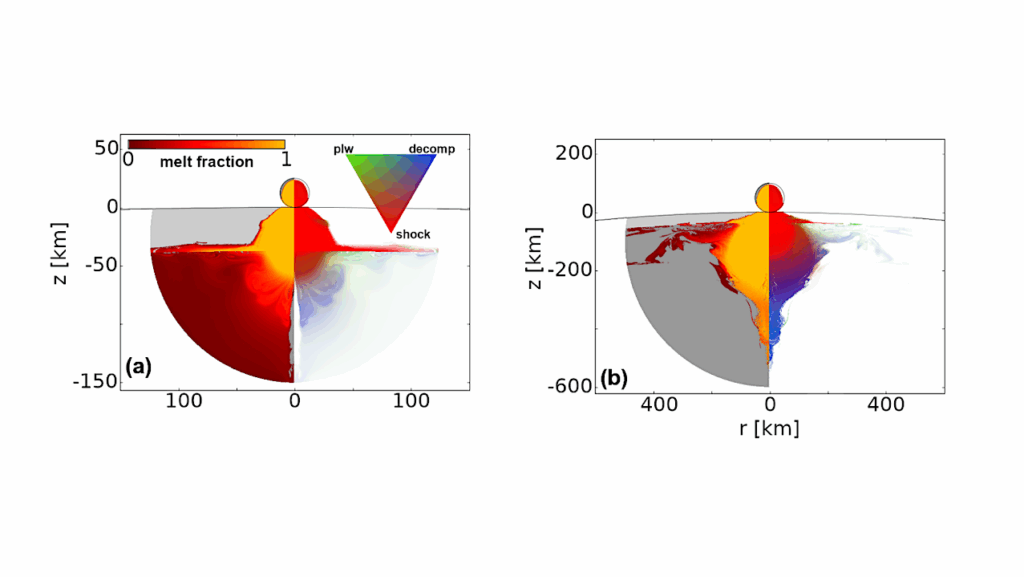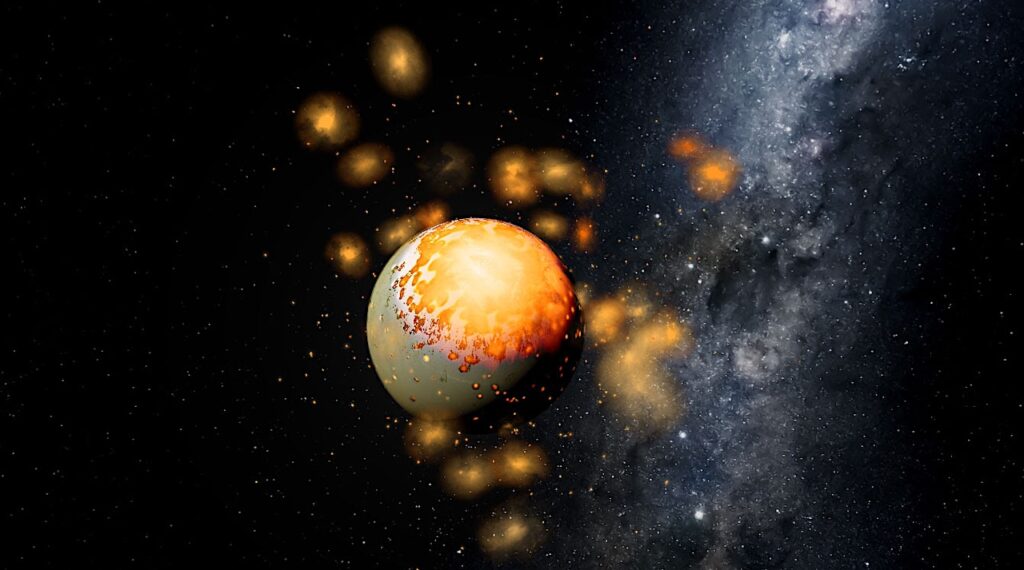Searching for Biosignatures in Exoplanetary Impact Ejecta

With the number of confirmed rocky exoplanets increasing steadily, their characterisation and the search for exoplanetary biospheres is becoming an increasingly urgent issue in astrobiology.
We aim to investigate the possibility of characterising an exoplanet (in terms of habitability, geology, presence of life etc.) by studying material ejected from the surface during an impact event. For given parameters characterising the impact event, we estimate the escaping mass and assess its subsequent collisional evolution in a circumstellar orbit, assuming a Sun-like host star. We calculate the fractional luminosity of the dust as a function of time after the impact event and study its detectability with current and future instrumentation. We consider the possibility to constrain the dust composition, giving information on the geology or the presence of a biosphere.
As examples, we investigate whether calcite, silica or ejected microorganisms could be detected. For a 20 km diameter impactor, we find that the dust mass escaping the exoplanet is roughly comparable to the zodiacal dust. The collisional evolution is best modelled by considering two independent dust populations, a spalled population consisting of non-melted ejecta evolving on timescales of millions of years, and dust recondensed from melt or vapour evolving on much shorter timescales. While the presence of dust can potentially be inferred with current telescopes, studying its composition requires advanced instrumentation not yet available. The direct detection of biological matter turns out to be extremely challenging.
Despite considerable difficulties (small dust masses, noise such as exozodiacal dust etc.), studying dusty material ejected from an exoplanetary surface might become an interesting complement to atmospheric studies in the future.
Gianni Cataldi, Alexis Brandeker, Philippe Thébault, Kelsi Singer, Engy Ahmed, Bernard L. de Vries, Anna Neubeck, Göran Olofsson
(Submitted on 14 Aug 2018)
Comments: 29 pages, 8 figures. Final publication is available from Mary Ann Liebert, Inc., publishers this http URL
Subjects: Earth and Planetary Astrophysics (astro-ph.EP)
Journal reference: Astrobiology, Volume 17, Issue 8, 2017, pp.721-746
DOI: 10.1089/ast.2015.1437
Cite as: arXiv:1808.04504 [astro-ph.EP] (or arXiv:1808.04504v1 [astro-ph.EP] for this version)
Submission history
From: Gianni Cataldi
[v1] Tue, 14 Aug 2018 01:39:47 GMT (544kb,D)
https://arxiv.org/abs/1808.04504
Astrobiology








